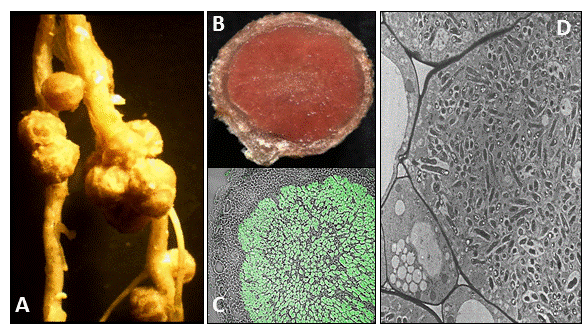The Fischer Lab - Bradyrhizobium diazoefficiens - Legume Symbiosis
The research group of Hans-Martin Fischer studied the symbiotic interaction of the nitrogen-fixing soil bacterium Bradyrhizobium diazoefficiens (formerly named B. japonicum) with its soybean host plant and related legumes. During the transition from the free-living to the endosymbiotic life style B. diazoefficiens cells need to adjust their physiology from an oxic to an extremely micro-oxic, nutritionally different environment inside root nodules. In addition, infecting bacteria must cope with a transient host defense reaction, e.g. reactive oxygen species. Research in our group aims at the functional analysis of molecular determinants and regulatory networks that underlay reprogramming of B. diazoefficiens during formation of an efficient endosymbiosis. Key technologies used in the laboratory include functional genomics, transcriptional profiling, proteomics, and microscopy.

